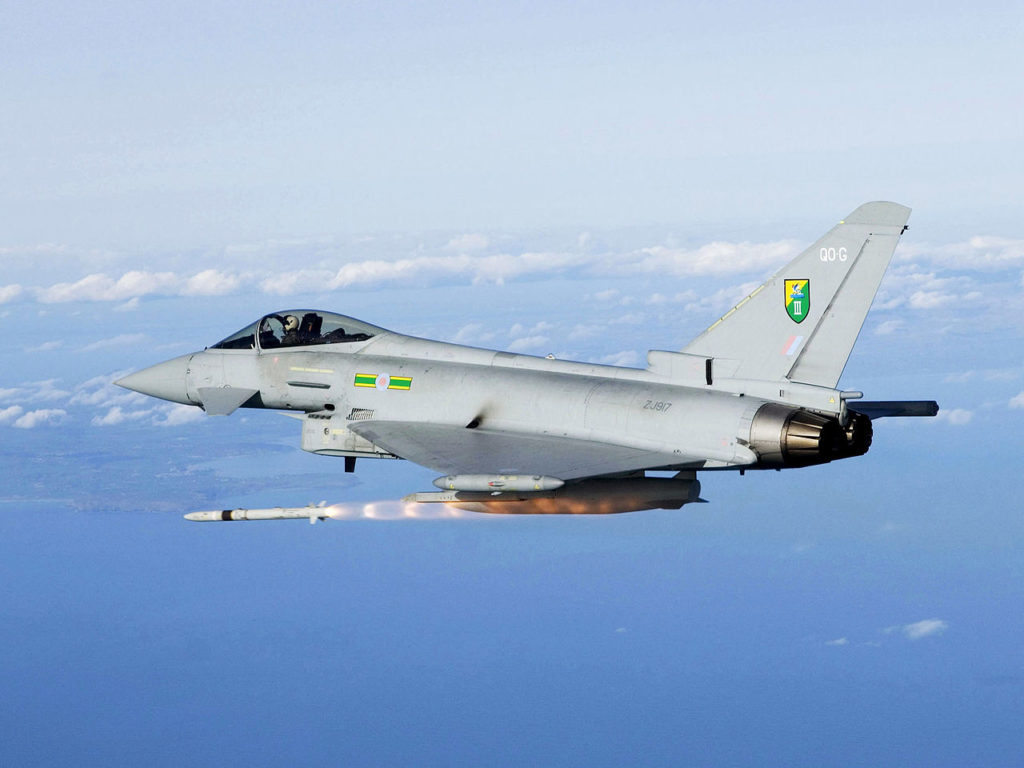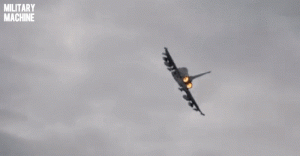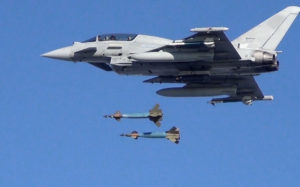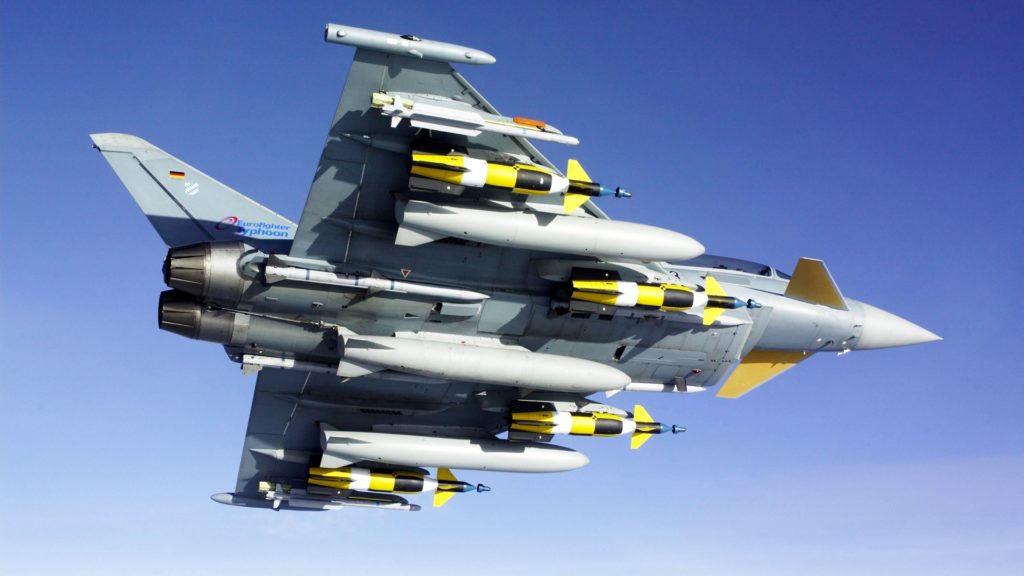Eurofighter Typhoon Fighter Jet
The Eurofighter Typhoon is a twin engine multirole fighter designed by a consortium of aeronautic companies lead by Eurofighter Jagdflugzeug GmbH. It features a unique canard delta wing configuration and closely resembles the French Dassault Rafale. The Eurofighter Typhoon began as a requirement by European nations to build an advanced air superiority aircraft similar in capabilities to the the F/A-18. Designers and engineers finally settled on a delta wing configuration which benefits high speed air-to-air contests. By the time the Eurofighter took to the air for testing, European governments wanted to incorporate ground strike capabilities as well. United Kingdom, Germany, and Italy have purchased the most Eurofighters.
Avionics:
The evolution of fighter jets and longer range guided air-to-air and surface-to-air missiles required an air superiority fighter capable of detecting and automatically prioritizing air and surface threats for the pilot. Using integrated jamming and electronic countermeasures, the Typhoon is equipped to evade most longer range radar guided missiles.

Deployment:
The Saab Gripen, Dassault Rafale, and many other contemporary European fighter jets closely resemble the design of the Eurofighter Typhoon. This may be partly due to the fact that the Typhoon was a collaborative effort between multiple independent companies and the favorability of the canard delta wing design. Since officially deploying in 2003, the Typhoon has engaged in only one air campaign.
 In 2011, the British Royal Air Force (RAF) deployed Typhoons to assist in enforcing a no-fly zone over Libya. Their first engagement consisted of Typhoons using older Panavia Tornados to target ground targets while the Typhoons dropped precision-guided ordnance atop it. The mission was a resounding success.
In 2011, the British Royal Air Force (RAF) deployed Typhoons to assist in enforcing a no-fly zone over Libya. Their first engagement consisted of Typhoons using older Panavia Tornados to target ground targets while the Typhoons dropped precision-guided ordnance atop it. The mission was a resounding success.

Difficulties:
Unfortunately, the British government has acknowledged that upkeep has been an issue. In 2011, the Commons Public Accounts Committee admitted that flights were grounded due to a lack of parts availability. It was even acknowledged that Typhoon squadrons had resorted to cannibalizing other Typhoons in order to meet mission readiness.
Ground Attack Role:
Further mission data obtained in contemporary campaigns against the Islamic State have shown that the Typhoon is not an effective ground-attack fighter. The Ministry of Defense has suggested purchasing the F-35A Lightning II as early as 2012. Until then, an entire squadron of aging Tornadoes remains in use until a new multirole fighter can be acquired.

Air Superiority:
For a fourth generation fighter, the Eurofighter Typhoon is a formidable air superiority aircraft. In staged contests, the F-35A Lightning II does not out perform the Typhoon in air-to-air combat. It can, however, undertake a wider range of mission tasks. When placed up against the Su-30MKI Flanker-H operated by the Indian Air Force, both aircraft were considered evenly matched. For an aircraft originally designed in the late 1970s and developed throughout the 1980s, the Typhoon appears to be the perfect answer to protecting NATO airspace from potential Soviet aggression. In the present era of asymmetrical warfare and unconventional ground forces, the Typhoon may have arrived, in 2003, a bit too late for the party.

Powerplant:
Two Eurojet EJ200 after burning turbofans power the Eurofighter Typhoon. Each is capable of 13,500 lb-ft of thrust and up to 20,230 lb-ft of thrust each with afterburners.
See Eurofighter Typhoon Specifications
| Length: 15.96 m (52.4 ft) |
| Wingspan: 10.95 m (35.9 ft) |
| Height: 5.28 m (17.3 ft) |
| Wing Area: 51.2 m² (551 sq ft) |
| Empty Weight: 11,000 kg (24,000 lb) |
| Loaded Weight: 16,000 kg (35,270 lb) |
| Max. Wakeoff Weight: 23,500 kg (51,800 lb) |
| Fuel Capacity: 5,000 kg (11,020 lb) internal |
| Powerplant: 2 × Eurojet EJ200 afterburning turbofan |
| Dry Thrust: 60 kN (13,500 lbf) each |
| Thrust With Afterburner: >90 kN (20,230 lbf) each |
Watch This Video Of The Eurofighter Typhoon In Action

